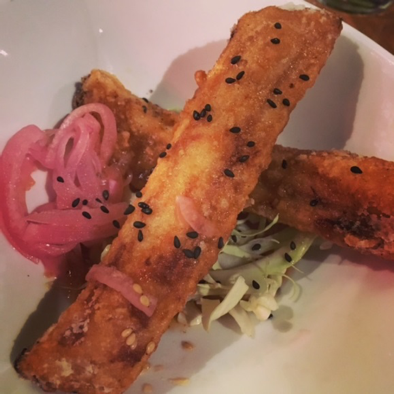By Claire Dawson, Marc Hershman Marine Policy Fellow
Americans love sushi — and they eat lots of it. Available at grocery store take-away counters, highway rest stops, chain locations, large all-you-can-eat establishments and trendy, upscale restaurants, this Japanese cuisine has truly infiltrated the hearts and stomachs of Americans.
Sushi became popular in the U.S. a short while after World War II, and by the mid-1970s a Los Angeles-based chef had invented the California roll. In the '80s, the number of sushi bars in America grew five-fold.
Despite our love of the food, we rarely consume more than several species of fish in our sushi: tuna, salmon and shrimp. With the vast popularity of these few key commercial species, fishing and farming pressure globally to supply them has also increased.
Take shrimp in America, for example. While we have healthy shrimp fisheries off the West Coast and down in the Gulf of Mexico, we produce nowhere near enough to meet demand. And 90 percent of the shrimp we eat within our boarders are imported from elsewhere, with about half of these being farmed. Our love of consuming the same thing over and over again is causing the oceans to run out. Not good, spicy tuna lovers. Not good at all.
But there is hope! While these varieties are uncontestably delicious, there are thousands of other delicious species of fish in the oceans that may also tickle our fancy as sushi. Broadening our variety and supporting chefs who source seafood for sushi sustainably would help reduce fishing and production pressure on key species, such as tuna and salmon.
Luckily for us in Washington state, we have a dedicated West-Seattle based sushi chef who is dedicated to doing just that. At Mashiko’s in West Seattle, Chef Hajime Sato painstakingly prepares all kinds of underutilized species, sometimes known as “trash fish," in a bid to promote seafood sustainability in sushi and educate consumers about the dangers of overfishing and how changing their consumer behavior can help combat this global issue. Chef Sato hosted a special dinner on Feb. 29 to showcase some of his most delicious, underutilized species creations.
Guests enjoyed wild Alaska salmon topped with Lummi salmon roe (supporting local and small-scale fisheries), black-cod collarbone (usually thrown out), buffalo carp ribs (an underutilized Great Lakes species), albacore tuna bloodline (usually thrown out), periwinkle snails (an invasive species on the East coast) and many more delicious dishes.
Chef Sato’s commitment to sustainability is so engrained in his business that he was able to create a new, high-value channel for giant Pacific octopus that is caught as bycatch in longline and pot fisheries along the West Coast. Sato was one of the first chefs to demand access to this octopus bycatch to serve in his restaurant, forcing suppliers to accommodate his needs and, in the process, reduce fish waste and generate value for fishermen. (When these octopus are caught as bycatch, they are used one of two ways: thrown back overboard as waste — they can reach 100 pounds and take up lots of valuable hold space on fishing boats — or cut up as bait for pot fisheries, which is a low value use for fishermen.) By demanding access to this octopus, Sato reduces the number that are thrown back overboard, while paying a higher price to fishermen — more than what octopus are worth as bait.
This alludes to the wider picture of seafood sustainability: Not only do you need committed chefs, but a strong community of committed suppliers, fishermen and interested customers. Being able to source sustainable seafood remains a huge challenge in the U.S. today, and it is something Chef Sato has a little help with. Much of what guests consumed at the Trash Fish dinner was supplied by Jack Cheney of Sea to Table. This company is dedicated to supplying restaurants and food service all over the U.S. with sustainable, domestic-caught seafood. It recently expanded into at-home delivery for their delicious and “green” goods, making it even easier for anyone to access sustainable seafood. The good news is: Communities like this are growing — and thriving.
Indeed, on any visit to Chef Sato’s establishment, guests will find themselves encouraged to consume dishes and rolls not often found on sushi menus, prepared with sustainably sourced seafood. When presented with their checks at the end of the meal, guests are also given a copy of the "Sustainable Seafood Guide" from Seafood Watch to keep. Throughout the entire dining experience, Chef Sato ensures guests can feel good about the choices they are making for their sushi in his restaurant.
Restaurants like Sato's see the opportunities — rather than the costs — of supplying guests with sustainable food. If more establishments took the same sustainability sentiment to heart, there could be far-reaching effects on our global seafood supply — and perhaps we could save certain species from the brink, to be enjoyed for years to come.





























